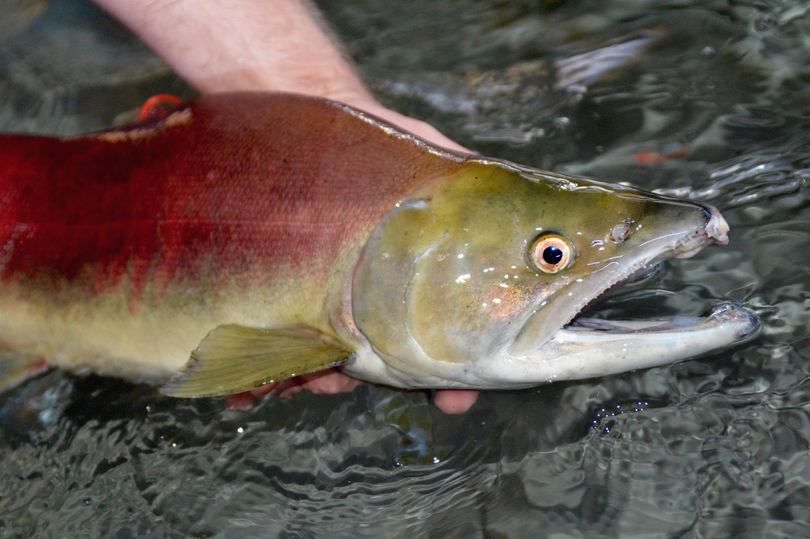Snake River sockeye get cooler reception

FISHING -- Water managers have started releasing more cold water from a reservoir in northern Idaho for endangered Snake River sockeye salmon following a year where lethally hot water killed 99 percent of the run.
The decision late last week to bump up the amount of 43-degree water released from Dworshak Reservoir on the North Fork Clearwater River should keep water temperature at Lower Granite Dam on the Snake River under 68 degrees through the summer, fisheries managers say.
Here's more from the Associated Press:
The increase to about 10,000 cubic feet per second is slightly earlier than average as fisheries managers and reservoir operators seek to avoid a repeat of last year. An estimated 4,000 Snake River sockeye had entered the Columbia River in what managers expected would be one of the best-ever returns to high mountain lakes in central Idaho. But only about 1 percent survived the 900-mile journey.
“Last year wasn’t any fun, and we don’t want to do that again if we can avoid it,” said Ritchie Graves of the National Oceanic and Atmospheric Administration.
Overall, about 90 percent of the 510,000 sockeye salmon that entered the Columbia River last year died when an unusual combination of low water and an extended heat wave pushed water temperatures past 70 degrees. Those conditions had not occurred in the basin since at least the 1950s and are lethal for cold-water sockeye.
Water managers say they have little ability to influence water temperature in the Columbia River but that Dworshak can supply enough water to make a difference in the Snake River.
Also, the Columbia Basin is cooler this year and much more hospitable for salmon and steelhead, Graves said. About 285,000 sockeye have entered the Columbia River so far, 40,000 more than the 10-year average. The run is now looking like it will be about three times larger than the pre-season estimate of 100,000, Graves said.
The pre-season estimate for Snake River sockeye was about 1,000, but it appears now significantly more fish will return. A handful of those sockeye – specially marked so their progress can be tracked through the system – have already arrived at Lower Granite Dam and did so in about 10 days after entering the Columbia. That’s about half the time it took the few fish that survived that far last year.
Despite the good outlook, officials appear ready to respond quickly after last year’s massive die-off. Afterward, a report concluded that Northwest fisheries managers needed to recognize warm-water events sooner and respond faster.
The report also noted faulty temperature readings last year caused managers to reduce cold-water releases from Dworshak Dam just when Snake River sockeye needed it most, a miscue that managers are seeking to avoid this year.
“With such hot weather forecasted to continue, water temperature at Lower Granite could soon exceed 68 degrees if not regulated, creating conditions in the reservoir system that are unhealthy for ESA-listed fish,” Steve Hall of the U.S. Army Corps of Engineers said in a statement. It announced the increased flows and referred to salmon and steelhead protected under the Endangered Species Act.
In addition, the Columbia River Technical Management Team recommended last week releasing colder water from deeper in Lower Granite Dam to help keep the Snake River cooler. The Army Corps of Engineers, which controls releases at the dam, quickly approved.
“This one was discussed for weeks and weeks last year,” Graves said. “This year everybody decided to give it a try.”
